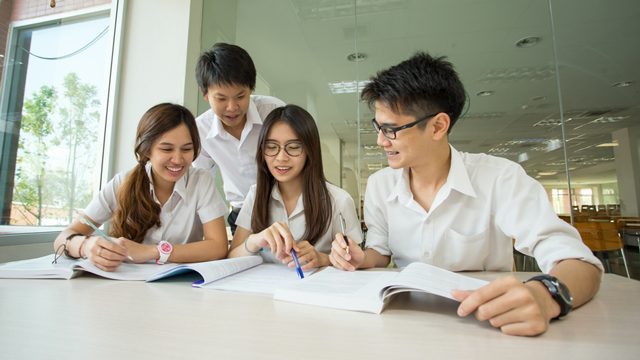SUMMARY
This is AI generated summarization, which may have errors. For context, always refer to the full article.

MANILA, Philippines – The Philippines has reason to celebrate ahead of International Women’s Day.
Data from the United Nations Educational, Scientific, and Cultural Organization (UNESCO) show the country is doing well in terms of gender equality in education.
While overall, twice as many girls aged between 6 and 11 are out of school, the map showed only 1% of girls in the Philippines were out of school. This is based on 2013 UIS data.
This was relatively the same around Southeast Asia, except for Vietnam and Malaysia, which did not have available data for that item.
To put this in perspective: using the same year, 7% of girls in the United States were out of school, and 62% in Liberia.
Southeast Asia, with the exception of Laos and Cambodia, is relatively open to girls getting an education.
Primary education is equal almost across the region, except in Laos and Cambodia. Both countries showed girls at a disadvantage to boys.
Enrollment in primary schools are equal for boys and girls, and the expected years of schooling are also the same.
So is there gender parity in Philippine and Southeast Asian education? Not really.
The clear differences happen from secondary education onwards.
The Philippines is colored blue in the maps for enrollment in lower and upper secondary education, meaning boys are at a disadvantage.
Myanmar and Thailand go from green – meaning gender parity – to blue when boys and girls reach the upper secondary level. Teenage girls in Indonesia, Cambodia, and Laos are less likely to enroll in upper secondary school.
The gender divide also affects the years of secondary school.
Boys in Thailand and the Philippines will not spend as many years in secondary school as girls. In Laos, Cambodia, and Indonesia, it is girls who are less likely to study for as long.
However, while gender gaps are still present in Southeast Asia, Brunei Darussalam maintains gender parity in enrollment and years of schooling.
Maps from the UNESCO eAtlas of Gender Inequality in Education compared factors like the access to school, number of years studying, and literacy rates.
The maps are made from the latest available data from the UNESCO Institute of Statistics, and go back to 1970.
From schools to work
While the Philippines can celebrate its success in the past, there are still some areas that can be improved.
The 2015 World Economic Forum’s Gender Gap Index scored and ranked each country based on opportunities and compensation for work, with 1 meaning full equality and 0 for inequality.
Based on the figures, the Philippines has done well in education, gender ratio in workplaces, but did not achieve full equality in labor force participation and wage equality.
|
|
Rank |
Score |
|
Labor force participation |
107 |
0.65 |
|
Wage equality for similar work (survey) |
10 |
0.80 |
According to the United Nations Development Program’s (UNDP) 2015 Human Development Report, men and women spend the same number of years in school – with women even having 0.4 more years than men – but more women are unemployed.
The report showed that only 51.1% of women have work, compared to the 79.7% of men.
Even if they did have a job, women have an uphill battle to become a boss. The Philippines scored 5.6 out of 7 in the ability of women to rise to positions of leadership, and 33% of companies have women in management.
Stereotypes of “typical” jobs and specific requirements for female applicants affect hiring and professional advancement. (READ: Looking for ‘young, female, pleasing’ applicants? Not right)
This is one factor not even a high level of education can completely fix. (READ: Are working women really empowered?)
For the Philippines, celebrations are in order on March 8, but it is also a time to remember that it still has it’s work cut out for it. – Rappler.com
Asian students image via Shutterstock
Add a comment
How does this make you feel?
There are no comments yet. Add your comment to start the conversation.